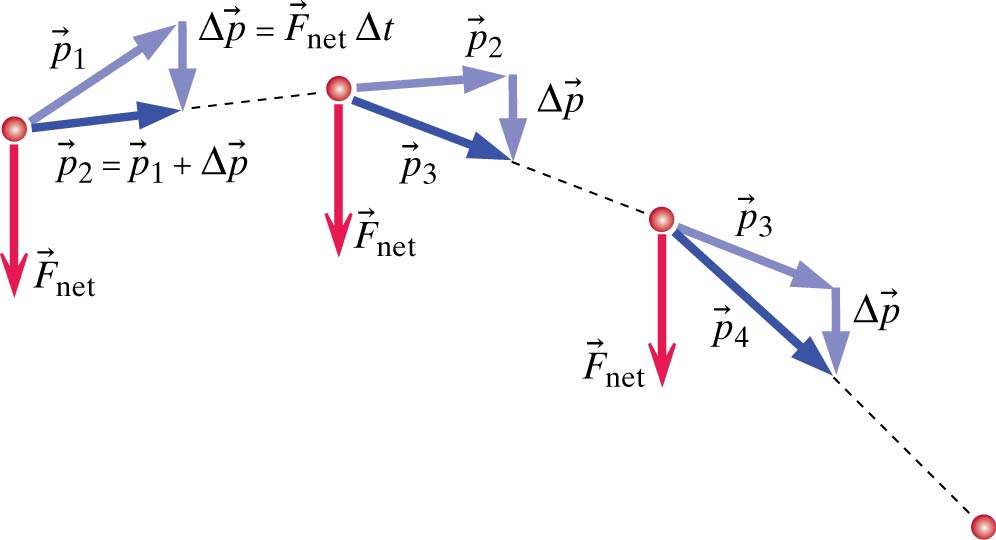This is an old revision of the document!
Predicting Motion Iteratively
You learned earlier how to predict the motion of a system that experiences a constant force. However, very few real systems can be approximately modeled using constant force motion. All systems can be modeled iteratively, that is, applying the motion prediction tools (momentum update and position update) in repeated small steps. In these notes, you will learn about this iterative process and how it is related to formal calculus.
The Concept of Iterative Prediction
“Iterate” means to “repeat.” In physics, it often means to perform the same calculation repeatedly using information produced by the previous calculation. You might think of this taking the output of a calculation and using it as the input for the new calculation.
To predict motion iteratively is to apply the momentum update and position update formula over small time steps, using their own predictions and the inputs for the next calculation. The steps for iteratively prediction motion are as follows:
- Calculate the (vector) forces acting on the system.
- Update the momentum of the system: $\vec{p}_f = \vec{p}_i + \vec{F}_{net}\Delta t$.
- Update the position of the system: $\vec{r}_f = \vec{r}_i + \vec{v}_{avg}\Delta t$.
- Repeat
